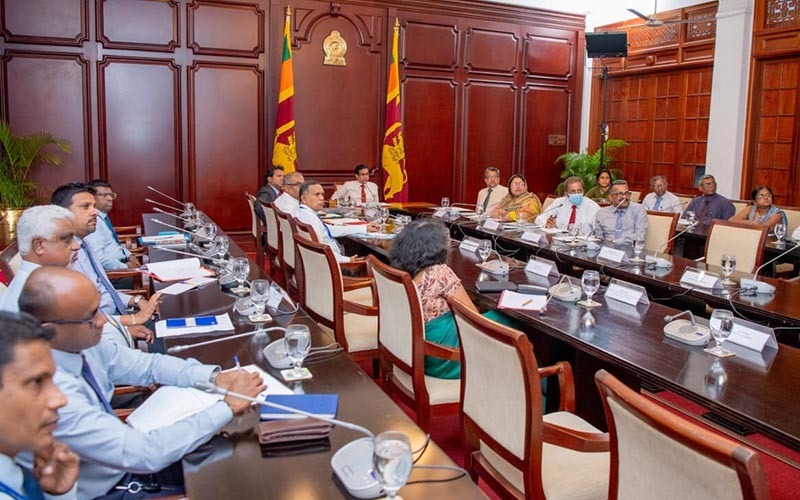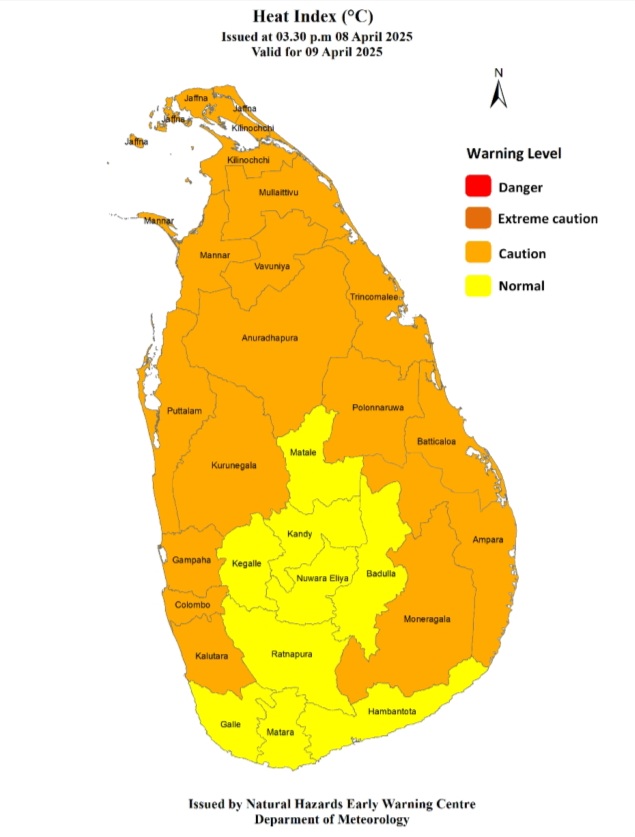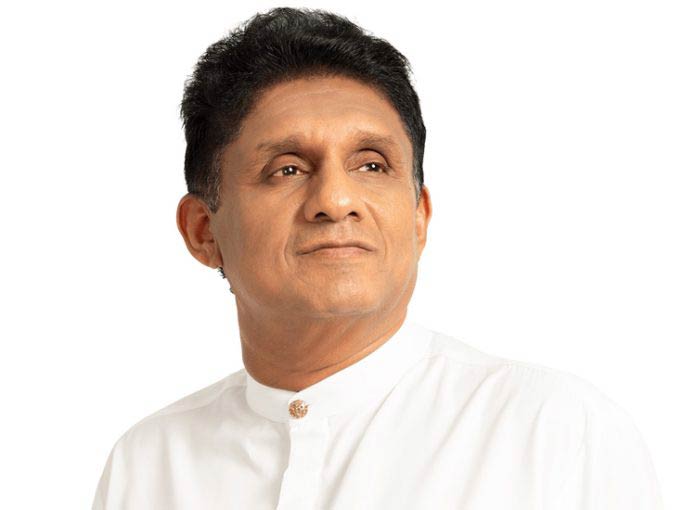News
Sri Lanka being fleeced through debt restructuring, says Economic Analyst

There isn’t a significant difference between the debt restructuring proposals made by private bondholders and the government of Sri Lanka, Economic Analyst Dhanusha Gihan Pathirana told The Island.
On 16 April 2024, the Sri Lankan government announced that the country’s debt restructuring process with private bondholders had hit a roadblock and that despite “constructive discussions”, the two sides did not come to an agreement on “restructuring terms.” The Ministry said that the Steering Committee comprises 10 of the largest bondholders and that the Ad Hoc Group controls “approximately 50 percent of the aggregate outstanding amount of ISBs.” These bondholders represent about 12 billion U.S dollars of the country’s total debt.
“When one looks at the announcement, one would feel that there is a significant difference in the proposals by private bondholders and the government of Sri Lanka. Verite Research has found that there isn’t a significant difference between the proposals made by private bondholders and the government of Sri Lanka,” he said.
The average interest rates for commercial loans are about 5 to 6 percent. The Ad Hoc Group of Bondholders, which consists of some of the country’s biggest private holders of debt, in its proposal has called the South Asian nation to issue a “Macro-Linked Bond” (MLB) as a part of new securities that will be offered to those who hold existing bonds.
“The Ad Hoc Group has suggested Sri Lanka pays an interest rate of 9.75 percent for the MLBs if Sri Lanka grows, on average by 5.3 percent, in the coming five years. The government has agreed to go up to 9 percent. You can see the difference here is minute,” he said.
He said that if Sri Lanka has to pay private bondholders over 9 percent interest when the average growth rate is around 5.3 percent from 2024 to 2028, the interest rate is almost double that of growth rate.
“One of the economic principles is that growth rate and interest rates must be roughly equal. If the profit rate is significantly higher than the growth rate, there will be significant inequality. Thus, the proposals of the bondholders and the government is a violation of basic economic principles,” he said.
Sri Lanka is trying to restructure about 25 billion dollars of its debt, although the total foreign debt is about 50 billion dollars. Sri Lanka continues to pay about 11 billion dollars of debt from multilateral organizations.
“But we are paying them. This is one of the points China raises. What the Chinese ask is why aren’t the multilateral agencies taking a haircut for the loans they have given,” he said.
The bond holders have agreed to give a 28 percent haircut to the debt they hold. However, in 2001 Argentina imposed a roughly 75 percent haircut on its creditors while Greece received a 64 percent haircut in 2012. Sri Lanka is trying to restructure about 25 billion dollars of its debt, although the total foreign debt is about 50 billion dollars. Sri Lanka continues to pay about 11 billion dollars of debt from multilateral organizations.
“Look at what has happened to Greece and Argentina even after such a large haircut. The debt to GDP ratio of Greece was about 160 percent in 2012. Even with a haircut which was over 50 percent of its GDP, Greece again has a debt to GDP ratio of about 160 percent,” he said.
On the other hand, if the GDP of the country picks up and goes above 98.9 billion dollars in 2028, Sri Lanka will virtually get no haircut from private bond holders.
“Imagine if we continue to grow at 5.3 percent, the haircut for private creditor debt will drop to about six to seven percent. The IMF says our GDP will be at about 80 billion by 2028. The Ad Hoc Group says, if the GDP is over 96 billion, they want Sri Lanka to pay an interest rate of 9.75 percent. This is simple,” he said.
Pathirana said the Sri Lankan government, too, has asked for a very small haircut, with a proposal that is identical with the one presented by the debt holders.
“The government wants to show us that it’s bargaining. Unfortunately for us, this is all very performative. What I want people to understand is, if Greece and Argentina are still in trouble despite massive haircuts, what is the fate of Sri Lanka that is asking for a very small haircut?” he asked.
When countries restructure, the concept of net present value is used, he said. The country will probably get a five-year period where we won’t have to repay debt from private creditors. However, once Sri Lanka starts to pay back loans it will have to pay 1.3 billion dollars as interest for the loans, which is subjected to another four percent interest.
“This is what we call ‘poli pita poli gahanawa’ (interest on top of interest). They are fleecing us,” he said.
News
Colombo Metropolitan Region, Eastern Development Plan and the Greater Hambantota Project discussed in detail

A meeting between Secretary to the President, Dr. Nandika Sanath Kumanayake and relevant ministry officials was held on Tuesday (08) at the Presidential Secretariat regarding the development plans to be implemented in Sri Lanka under three zones, in collaboration with the Surbana Jurong Institute of Singapore and 18 Ministries.
During the meeting it was discussed in detail regarding the plans for the Colombo Metropolitan Region, Eastern Development Plan and the Greater Hambantota Project. The officials from Singapore-based urban planning and infrastructure consultancy Surbana Jurong also joined the discussion virtually.
Progress reports on the three projects were reviewed in detail and Dr. Kumanayake instructed the officials to identify any deficiencies and finalize the necessary actions within the next two weeks.
The discussion also addressed delays in securing necessary approvals for investments under the existing regulatory framework, as well as the urgent need to revise certain legislative instruments to better facilitate national development.
The meeting was attended by Secretary to the Prime Minister G.P. Saputhanthri, Senior Additional Secretary to the President Russel Aponsu, Secretary to the Ministry of Urban Development, Construction and Housing U.G. Ranjith Ariyaratne, and several senior officials from the respective ministries.
News
Heat index at ‘Caution level’ in Northern, North-central, Eastern, North-western, Western provinces and Monaragala district today [09]

The Natural Hazards Early Warning Centre of the Department of Meteorology has issued a Warm Weather Advisory for 09 April 2025
The public are warned that the Heat index, the temperature felt on human body is likely to increase up to ‘Caution level’ at some places in Northern, North-central, Eastern, North-western, and Western provinces and in Monaragala district.
The Heat Index Forecast is calculated by using relative humidity and maximum temperature and this is the condition that is felt on your body. This is not the forecast of maximum temperature. It is generated by the Department of Meteorology for the next day period and prepared by using global numerical weather prediction model data.
Effect of the heat index on human body is mentioned below is prepared on the advice of the Ministry of Health and Indigenous Medical Services.

ACTION REQUIRED
Job sites: Stay hydrated and takes breaks in the shade as often as possible.
Indoors: Check up on the elderly and the sick.
Vehicles: Never leave children unattended.
Outdoors: Limit strenuous outdoor activities, find shade and stay hydrated. Dress: Wear lightweight and white or light-colored clothing.
Note:
In addition, please refer to advisories issued by the Disaster Preparedness & Response Division, Ministry of Health in this regard as well. For further clarifications please contact 011-7446491.
News
Sajith asks govt. to submit its MoUs with India to Parliament

Prof. Jayasumana raises possibility of Lanka ending up with “Quad’
Opposition and SJB Leader Sajith Premadasa has said it is the responsibility of the NPP government to submit the MoUs/agreements that were recently signed with India to the respective Sectoral Oversight Committees (SOCs).
Premadasa said so when The Island raised the issue with him. He said that during his meeting with Premier Modi his focus had been on opening the Indian market for Sri Lankan garment exports.
The seven MoUs/agreements signed on 05 April included defence cooperation, energy, Eastern Province development and digitalisation.
Meanwhile, the Vice President of Sarvajana Balaya and former lawmaker Prof. Channa Jayasumana said that the government owed an explanation whether the recently signed MoU on defence cooperation directly or indirectly attached Sri Lanka to the Quad security alliance, consisting of the US, Australia, Japan and India.
 The former SLPPer raised the issue at a meeting held at Boralesgamuwa on Monday (07) in support of Sarvajana Balaya candidates contesting the May 6 LG polls.
The former SLPPer raised the issue at a meeting held at Boralesgamuwa on Monday (07) in support of Sarvajana Balaya candidates contesting the May 6 LG polls.
Prof. Jayasumana urged that the MoU on Defence Cooperation be placed before Parliament, and the people, without further delay. The academic who served as State Health Minister during President Gotabaya Rajapaksa’s tenure said that President Anura Kumara Dissanayake’s foreign policy direction should be dealt with.
By Shamindra Ferdinando
-

 Business2 days ago
Business2 days agoColombo Coffee wins coveted management awards
-

 Business5 days ago
Business5 days agoDaraz Sri Lanka ushers in the New Year with 4.4 Avurudu Wasi Pro Max – Sri Lanka’s biggest online Avurudu sale
-

 Features3 days ago
Features3 days agoStarlink in the Global South
-

 Business5 days ago
Business5 days agoStrengthening SDG integration into provincial planning and development process
-

 Business4 days ago
Business4 days agoNew SL Sovereign Bonds win foreign investor confidence
-

 Sports6 days ago
Sports6 days agoTo play or not to play is Richmond’s decision
-

 Features3 days ago
Features3 days agoModi’s Sri Lanka Sojourn
-

 Midweek Review12 hours ago
Midweek Review12 hours agoInequality is killing the Middle Class











